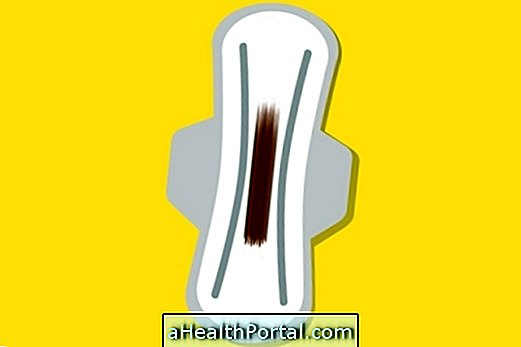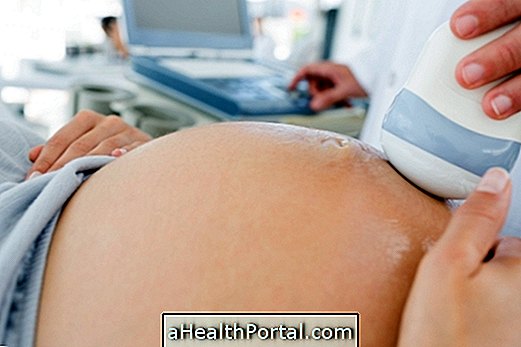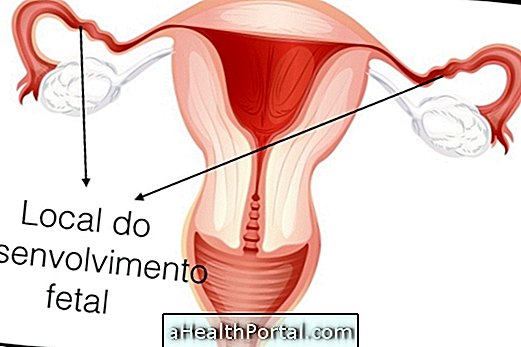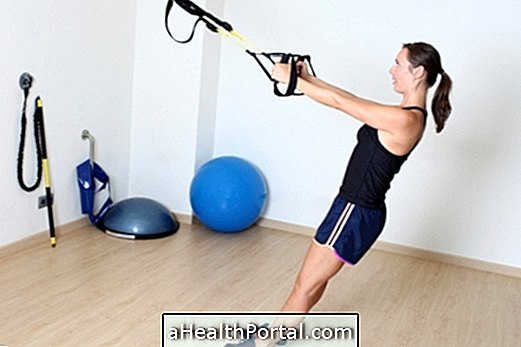To help the baby turn upside down so that birth can be normal and decrease the risk of congenital hip dysplasia, the pregnant woman can do some exercises from the 32 weeks of gestation with the knowledge of the obstetrician. Get to know the baby's development at 32 weeks of pregnancy.
These exercises use gravity and promote the stretching of the pelvic ligaments, favoring the rotation of the baby, helping it to stay upside down.
Exercise 1

Put a mattress or cushion on the floor. In the four-way position, lower your head and lift your butt, leaving only your head and arms resting on the floor. You should stay in this position for 10 minutes, and repeat the exercise about 3 to 4 times a day.
Exercise 2

Place a cushion on the floor near the bed or sofa and with your knees bent over the bed or sofa, lean forward until you reach the floor with your hands. Rest your head on your arms, which should be on top of the cushion and keep your knees firm on the edge of the bed or sofa.
You should stay in this position for 5 minutes during the first week, increasing in the following until you reach 15 minutes, repeating 3 times a day.
Exercise 3

Lie on the floor with your legs bent and then raise your hip to the maximum height you can. If necessary, place a cushion under the back to help keep your hips elevated. One should stay in this position for about 5 to 10 minutes and do it 3 times a day.
How to prepare for the exercises
To prepare for exercise, the pregnant woman should:
- Be on an empty stomach so you do not get heartburn or nausea. Find out which home remedies are used for heartburn in pregnancy;
- Talk to the baby or eat a teaspoon of honey, suck a bullet or to make sure he is awake;
- Wear comfortable clothing;
- Be accompanied, so that the exercises are done correctly and safely.
In addition, these exercises should be done every day until the baby stays upside down, a position that can be checked on the ultrasound. However, it is common for a pregnant woman to feel her baby turning during or after exercise.
How to know if the baby fit
This happens when the baby's head begins to descend on the pelvic gullet in preparation for delivery and occurs around the 37th week of pregnancy.
To find out if the baby is fit, the doctor can palpate the abdomen to see if the head has started to fit. If three to four-fifths of the head feels above the pubic bone, the baby is not snapped, but if you feel only a fifth, it means the baby is already deeply in place.
Besides the medical examination that can confirm that the baby fit, the pregnant woman may also feel slight differences. The belly grows lower and as there is more room for the lungs to expand, it breathes better. However, bladder pressure may increase, making the expectant mother more likely to urinate or feel pelvic pain.
What if the baby does not turn up until 37 weeks of pregnancy?
If even when performing these exercises the baby does not turn itself, the doctor can choose to make an external cephalic version, which consists of turning the baby through specific maneuvers in the pregnant woman's belly. In this case, the doctor gives the vein a remedy to avoid contractions and uses this technique so that the baby does a tumbling inside the uterus, staying upside down:

However, the baby's seated position does not totally contraindicate normal delivery, and with due help, a woman may be able to give birth to the baby in this position.
See also a Home Remedy to speed up labor.




















